I work with satellite data organised on an irregular two-dimensional grid whose dimensions are scanline (along track dimension) and ground pixel (across track dimension). Latitude and longitude information for each ground pixel are stored in auxiliary coordinate variables.
Given a (lat, lon) point, I would like to identify the closest ground pixel on my set of data.
Let's build a 10x10 toy data set:
import numpy as np
import xarray as xr
import cartopy.crs as ccrs
import matplotlib.pyplot as plt
%matplotlib inline
lon, lat = np.meshgrid(np.linspace(-20, 20, 10),
np.linspace(30, 60, 10))
lon += lat/10
lat += lon/10
da = xr.DataArray(data = np.random.normal(0,1,100).reshape(10,10),
dims=['scanline', 'ground_pixel'],
coords = {'lat': (('scanline', 'ground_pixel'), lat),
'lon': (('scanline', 'ground_pixel'), lon)})
ax = plt.subplot(projection=ccrs.PlateCarree())
da.plot.pcolormesh('lon', 'lat', ax=ax, cmap=plt.cm.get_cmap('Blues'),
infer_intervals=True);
ax.scatter(lon, lat, transform=ccrs.PlateCarree())
ax.coastlines()
ax.gridlines(draw_labels=True)
plt.tight_layout()
Note that the lat/lon coordinates identify the centre pixel and the pixel boundaries are automatically inferred by xarray.
Now, say I want to identify the closest ground pixel to Rome.
The best way I came up with so far is to use a scipy's kdtree on a stacked flattened lat/lon array:
from scipy import spatial
pixel_center_points = np.stack((da.lat.values.flatten(), da.lon.values.flatten()), axis=-1)
tree = spatial.KDTree(pixel_center_points)
rome = (41.9028, 12.4964)
distance, index = tree.query(rome)
print(index)
# 36
I have then to apply unravel_index to get my scanline/ground_pixel indexes:
pixel_coords = np.unravel_index(index, da.shape)
print(pixel_coords)
# (3, 6)
Which gives me the scanline/ground_pixel coordinates of the (supposedly) closest ground pixel to Rome:
ax = plt.subplot(projection=ccrs.PlateCarree())
da.plot.pcolormesh('lon', 'lat', ax=ax, cmap=plt.cm.get_cmap('Blues'),
infer_intervals=True);
ax.scatter(da.lon[pixel_coords], da.lat[pixel_coords],
marker='x', color='r', transform=ccrs.PlateCarree())
ax.coastlines()
ax.gridlines(draw_labels=True)
plt.tight_layout()
I'm convinced there must me a much more elegant way to approach this problem. In particular, I would like to get rid of the flattening/unraveling steps (all my attempts to build a kdtree on a two-dimensional array failed miserably), and make use of my xarray dataset's variables as much as possible (adding a new centre_pixel dimension for example, and using it as input to KDTree).

